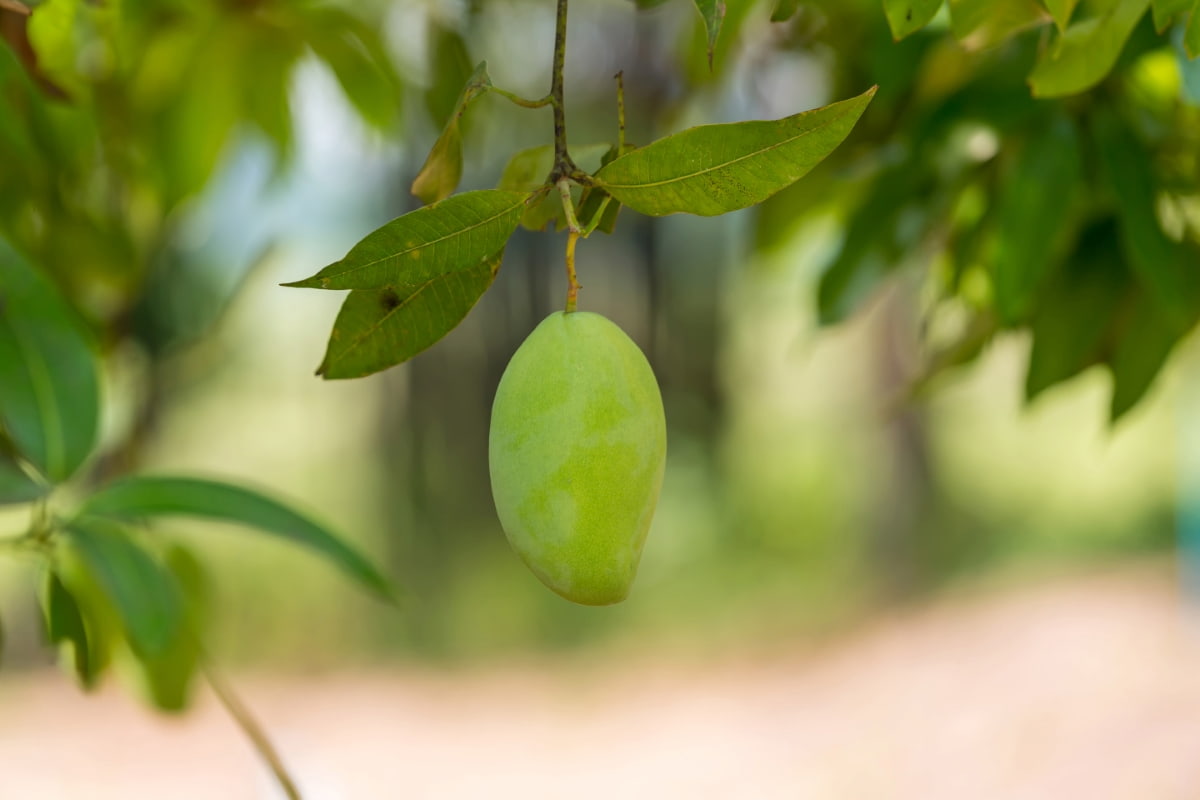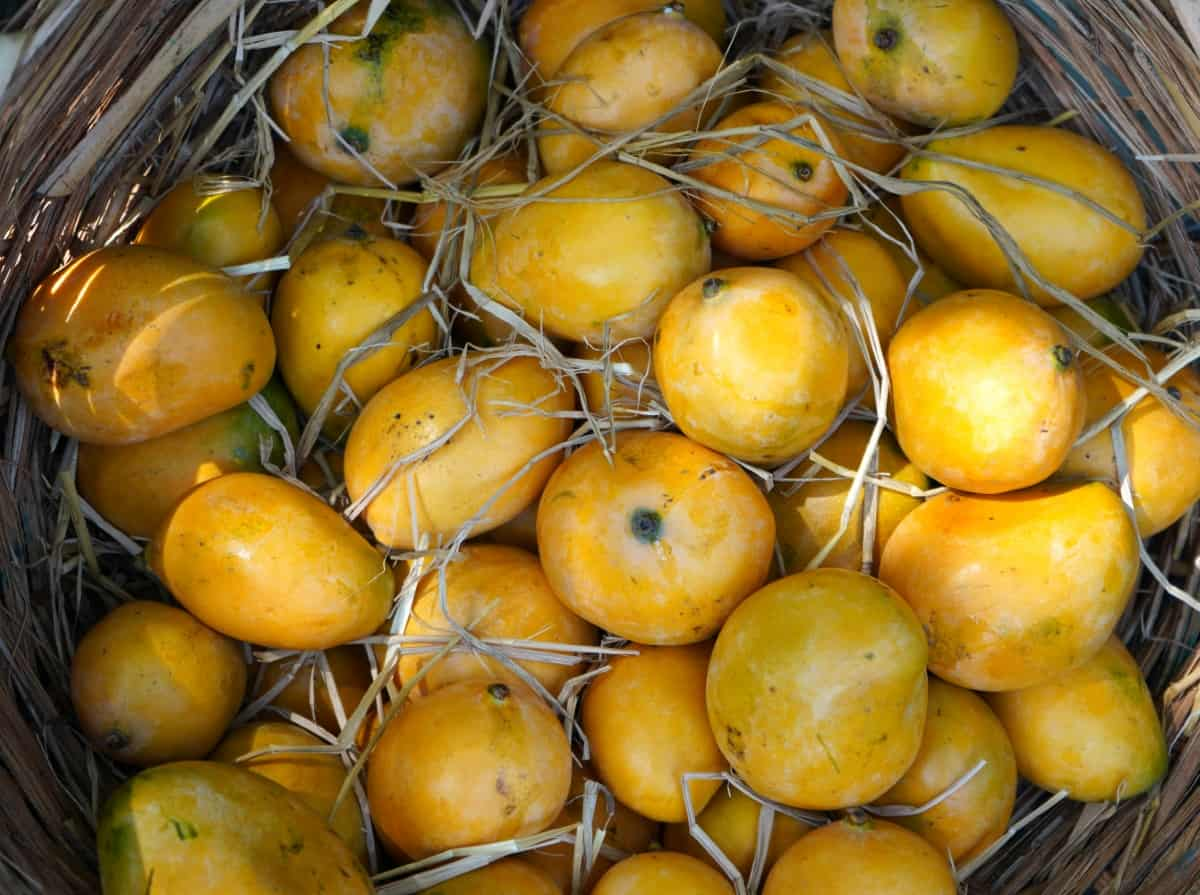Alphonso, also known as Hapus, is a popular mango variety cultivated for its delicious taste. It requires specific farming techniques to thrive. Successful Alphonso mango farming involves careful selection of suitable soil and climate conditions, regular irrigation, pest, disease management, and proper pruning. Timely harvesting is crucial to ensure optimum sweetness and flavor. Cultivators must also adhere to quality control measures to maintain the fruit’s reputation as the “King of Mangoes.”

Hapus/Alphonso Mango Farming
What is Alphonso/Hapus Mango Farming?
Alphonso, known as Hapus, mango farming refers to cultivating this renowned variety. It involves creating ideal conditions for the mango trees to grow and produce high-quality fruits. This includes selecting appropriate soil and climate conditions, providing regular irrigation, implementing effective pest and disease management strategies, and performing necessary pruning. Harvesting is done at the right time to ensure optimal sweetness and flavor. Strict adherence to quality control measures is essential to maintain the reputation of Alphonso mangoes as the “King of Mangoes.”
Special Features of Alphonso/Hapus Mango
- Alphonso mangoes have a unique taste and aroma.
- They are rich in iron, vitamin A, vitamin E, and selenium.
- Alphonso mangoes are packed with powerful antioxidants.
- They contain dietary fiber and essential proteins.
- Alphonso mango is also known as Hapus in Northern regions.
- The best variation of Alphonso mangoes is from Ratnagiri, Maharashtra.
- The fruits weigh between 150 and 300 grams (5.3 and 10.6 oz).
- They have a rich, creamy, tender texture and are non-fibrous.
Pits Preparation for Alphonso/Hapus Mango
- Prepare pits for Alphonso/Hapus mango farming.
- Choose well-drained soil for pit digging.
- Dig pits of suitable size and depth, considering root development.
- Leave pits to weather for a few weeks before planting.
- Amend the soil in the pit with organic matter and compost.
- Ensure proper spacing between pits for healthy growth.
- Maintain adequate moisture levels in the pits for successful establishment.
Plantation of Alphonso/Hapus Trees
Selection of Healthy Saplings: When selecting saplings for Alphonso/Hapus mangoes, consider these characteristics: a minimum age of 2-3 years, a height of 3-4 feet, well-developed roots, healthy green leaves, and freedom from pests or diseases. These qualities ensure a strong foundation for successful cultivation.
Plants Per Acre: The number of Alphonso/Hapus mango plants per acre varies depending on the spacing. The recommended spacing is 10 x 10 meters, allowing for approximately 82 trees per acre. However, alternative calculations suggest planting around 150 trees per acre with a row and tree spacing of 5 meters, considered the average plantation density.
Age of the Plant when Planted: Mango trees typically start bearing fruits within three years, but the yield is limited initially. Once the tree reaches 3-4 years old, it takes fruits independently. Adequate water supply, direct sunlight for at least six hours a day, and a minimum of 5-6 years from planting are required for full bloom. Alphonso mango trees can bear fruits for up to 300 years.
Support and Stacking of Plants: Alphonso mango plants require approval and stacking for proper growth and fruit development. This involves providing sturdy support structures such as stakes or trellises to help the plants remain upright. Additionally, the branches may need to be carefully tied or stacked to ensure proper distribution and prevent breakage under the weight of the fruits.
Drip Irrigation/ Water Management in Alphonso/Hapus Mango
Drip irrigation is a recommended water management technique for Alphonso/Hapus mangoes. It involves delivering water directly to the root zone through pipes and emitters, ensuring efficient water usage and reducing water loss. Drip irrigation helps maintain optimal soil moisture levels, preventing overwatering or underwatering. This method also minimizes weed growth, prevents foliar diseases, and promotes healthy root development. Regular monitoring and adjusting the irrigation system are essential for successful water management.
In case you missed it: Totapuri Mango Farming: A Comprehensive Guide to Planting, Pruning, Care, and Harvest

Compost/Fertilizers Application Stages
Compost and fertilizer application in Alphonso mangoes should be made at specific stages for optimal growth and fruit production. During the initial planting, incorporate compost or organic matter into the soil. In the first year, apply a balanced fertilizer in divided doses after the first flush. During subsequent years, apply a high nitrogen fertilizer before flowering, followed by a balanced fertilizer after the fruit set. In the later years, use a balanced fertilizer with increased phosphorus and potassium to support fruit development.
Pruning Stages/Season for Alphonso/Hapus Mango
Pruning is vital for mango tree care, promoting healthy growth and fruit production. Pruning on current season shoots in October enhances inflorescence emergence, flowering, fruit set, and yield. It aids in rejuvenating the tree when exhausted by high yields.
Flowering Stages for Alphonso/Hapus Mango
Time of Flowering: The flowering season for Alphonso mango trees begins in southern India. Alphonso mangoes are a seasonal fruit harvested from mid-April to the end of June, with approximately 90 days from flowering to harvest.
Factors Affecting Flowering: Mango flowering is influenced by environmental factors such as low temperature, water stress, and carbohydrate availability. Additionally, factors like tree age, leaf age, and endogenous hormonal levels play a role in the process of mango flowering.
Importance of Flowering
Pollination Techniques: Alphonso mangoes are primarily cross-pollinated by insects, especially bees. Transferring the pollen grains from the male to the female flowers is essential for successful pollination and fruit set in Alphonso mango trees.
Pests and Diseases Management in Alphonso/Hapus Mango
Effective pest and disease management is crucial for maintaining the health of Alphonso/Hapus mango trees. Common problems include mango hoppers, fruit flies, and mango mealybugs. Integrated Pest Management (IPM) practices, such as regular monitoring, pruning infected parts, and using biocontrol agents, can help manage pest populations.
Diseases like powdery mildew, anthracnose, and bacterial black spot can be controlled by adopting cultural practices like proper pruning, maintaining good air circulation, and using fungicides when necessary. Regular orchard sanitation, timely application of recommended pesticides, and adherence to local agricultural guidelines are essential for effective pest and disease management in Alphonso/Hapus mango farming.
Harvesting Time and Yield of Alphonso/Hapus Mango
Alphonso mangoes are harvested from mid-April to the end of June, with a flowering-to-harvest period of approximately 90 days. After harvest, the mangoes take around 15 days to ripen. The harvesting season typically spans from the 1st week of May to the 1st week of June. A mango tree can yield between 20 to 200 kilograms per harvest season.
In case you missed it: Himayat Mango Farming: A Comprehensive Guide to Planting, Pruning, Care, and Harvest

Conclusion
Alphonso/Hapus mango farming requires careful attention to various aspects such as soil and climate conditions, irrigation, pest and disease management, pruning, and quality control. The delicious taste and nutritional benefits of Alphonso mangoes and proper farming practices contribute to successful cultivation and the enjoyment of this renowned mango variety.
- Feed Your Flock for Less: Top 10 Tips to Save on Chicken Feed
- Ultimate Guide to Ossabaw Island Hog: Breeding, Raising, Diet, and Care
- Hatching Answers: The Top 10 Reasons Your Chickens Aren’t Laying Eggs
- Eggs and Economics: Breaking Down the Cost of Raising Backyard Chickens
- Defend Your Greens: Proven Methods to Keep Iguanas Out of Your Garden
- Ultimate Guide to Cinnamon Queen Chicken: A Comprehensive Guide for Beginners
- Ultimate Guide to California Tan Chicken: Breeding, Raising, Diet, Egg-Production and Care
- Ultimate Guide to Marsh Daisy Chicken: Breeding, Raising, Diet, and Care
- 10 Types of Chicken Farming Businesses You Can Start for Profits